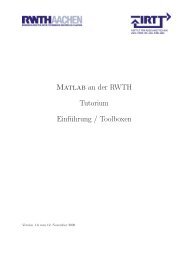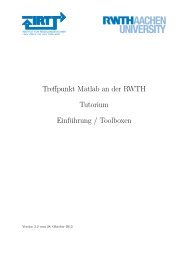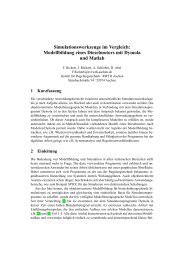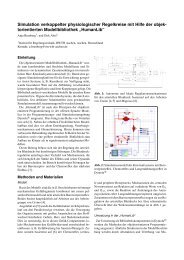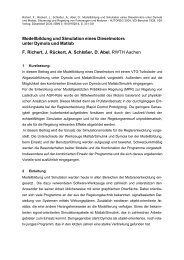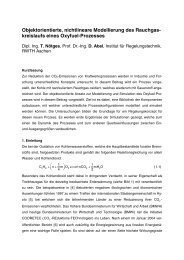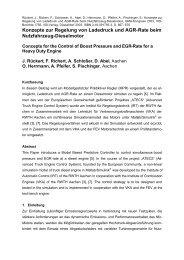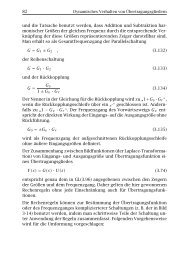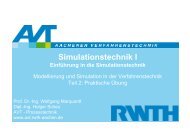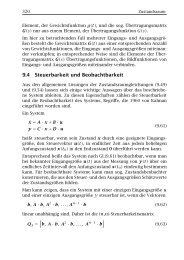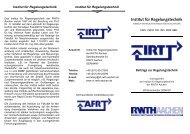Simplified Nyquist Criterion
Simplified Nyquist Criterion
Simplified Nyquist Criterion
Create successful ePaper yourself
Turn your PDF publications into a flip-book with our unique Google optimized e-Paper software.
160 Controller setting and stability of control loops<br />
5.6.3 Controller design in the Bode diagram<br />
For the practical treatment of linear control systems the representation<br />
of frequency responses in the Bode diagram is preferred above that by<br />
the <strong>Nyquist</strong> plots because the former method is simpler by far. The<br />
statements on the stability of a closed loop provided by the <strong>Nyquist</strong><br />
criterion can be transferred to the representation of the frequency response<br />
of the open control loop in the Bode diagram. This shall only<br />
be dealt with in the following text within the context of the “<strong>Simplified</strong><br />
<strong>Nyquist</strong> <strong>Criterion</strong>”.<br />
As illustrated in figure 5-26, we can, for stability testing with the “<strong>Simplified</strong><br />
<strong>Nyquist</strong> <strong>Criterion</strong>” determine the frequency ω π from the phase<br />
response with the definition ϕ 0 (ω π ) =−π and check whether the amplitude<br />
of the frequency response |G 0 (jω π )| is less than one. Alternatively,<br />
with the definition |G 0 (jω d )|=1 we can obtain from the amplitude<br />
response the frequency ω d and check whether the phase angle<br />
ϕ 0 (ω d ) is greater than −π.<br />
We must ensure in every case that the “<strong>Simplified</strong> <strong>Nyquist</strong> <strong>Criterion</strong>” is<br />
applicable.<br />
Summarizing, the “<strong>Simplified</strong> <strong>Nyquist</strong> <strong>Criterion</strong>” for the application in<br />
the Bode diagram gives:<br />
If the open control loop is stable or has integrating behaviour<br />
and the phase response of its frequency response in the Bode<br />
diagram intersects the lines −180 ◦ − n · 360 ◦ with a negative<br />
slope only, then the following applies:<br />
If the amplitude of the frequency response |G 0 (jω π )| is less<br />
than one at frequency values for which the phase response<br />
gives ϕ 0 (ω π ) =−180 ◦ − n · 360 ◦ , then the closed control<br />
loop is stable. Otherwise it is not stable.<br />
For the “<strong>Simplified</strong> <strong>Nyquist</strong> <strong>Criterion</strong>” the point where the phase response<br />
is just tangent to the line −180 ◦ − n · 360 ◦ for infinit values of<br />
ω has to be considered.<br />
Figure 5-26 also shows that it is possible to obtain the gain margin<br />
from the amplitude response |G 0 (jω π )| and the phase margin from<br />
the phase response ϕ 0 (ω d ).



